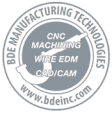Posted On: July 23, 2021
Lathes are one of the oldest yet versatile machining tools, which have evolved and adapted effectively with time. This is why they still find uses across manufacturing units of various industries. Mainly preferred for cutting and turning operations, lathes also perform drilling, sanding, and facing effectively. Not to be confused with a milling machine, lathes use a rotary cutting tool that moves along axes to make the desired cuts. Today, the CNC lathe machine has become the industry standard for manufacturing precision components and parts. Owing to the immense popularity of CNC machining, it’s wise to use a CNC lathe machine that transforms production processes. Are you intrigued to know more about them? What is the structure of the lathe? This post answers the same. So, stay tuned.
Lathe Machine Parts and Its Function
Following are the major components of a lathe machine:
- Head Stock:
This part is clamped on the left-hand end of the bed. Its function is to transmit the power to different parts of the lathe. It comprises the bearings allowing the workpiece to rotate against the cutting tool. It also houses speed changing mechanism to obtain different speeds.
- Tail Stock:
It is a movable casting secured on the end of the lathe parallel to the headstock. Popularly known as a loose head, it is used for installing drill clamps for drilling center holes to support longer workpieces.
- Bed:
It is the horizontal structure of the lathe on which the casting for the tool post and tailstock both mount to and slide as needed. Almost all lathes comprise a bed except CNC lathes. CNC lathe machines have a vertical beam to minimize the accumulation of the swarf.
- Lead Screw and Feed Rod:
The feed rod is a power transmission mechanism. It is used for precise carriage movement along the longitudinal axis of the machine. The lead screw is set for turning threads on a lathe. Not all lathe machines have a feed rod, in which case, the lead screw is responsible for both functions.
- Carriage:
Carriage is one important component located between headstock and tailstock. This part of a lathe is responsible for supporting and guiding the tool against the workpiece throughout the process.
- Chuck:
Irrespective of the length and shape, it holds the workpiece securely. This mechanical device is attached to a lathe through screws fitted on the spindle nose. There are two types of chucks – 3-jaw or self-centering chuck and 4-jaw or independent chuck.
- Compound Rest:
It is designed to support the cutting tool and tool post in different positions. It is one of the important components for turning angles and boring short tapers.
- Saddle:
It is found on the lathe. Technically, it is part of the carriage. Available in an H shape, the saddle is designed for supporting across slide movements.
- Main Spindle:
It features a cylindrical shaft, allowing a longer workpiece to pass through it. It is responsible for holding the workpiece securely. So, the force of the tool can’t overpower.
- Leg:
Legs bear the overall weight of the lathe and transfer it to the surface. Therefore, it is important to secure them using the foundation bolt.
- Tool Post:
It is found on the top of the carriage. It is used for holding several cutting tools or tool holders.
- Cross-Slide:
This component is clamped on the carriage allowing the tool to slide back and forth.
Outlined above are the basics of CNC lathe machines. Owing to the beneficial features that have contributed to their popularity, they are still applicable in most industries. If you are looking for a CNC lathe machining service provider to accomplish your upcoming production needs, you must employ an industry player like BDE Manufacturing Technologies. With years of industry experience, the company has been proudly providing high-quality and performance-driven CNC lathe machine services, blending the old techniques with modern machining.
Related Blog Post: info@bdeinc.com
info@bdeinc.com 866.262.6233
866.262.6233





